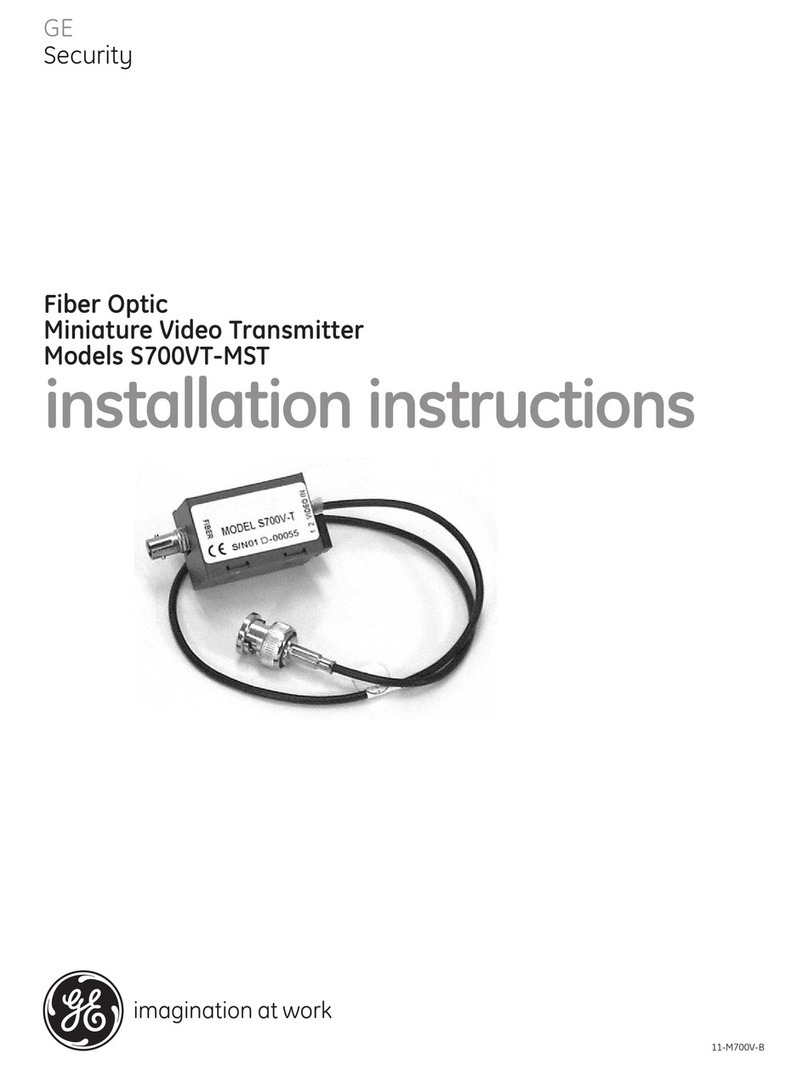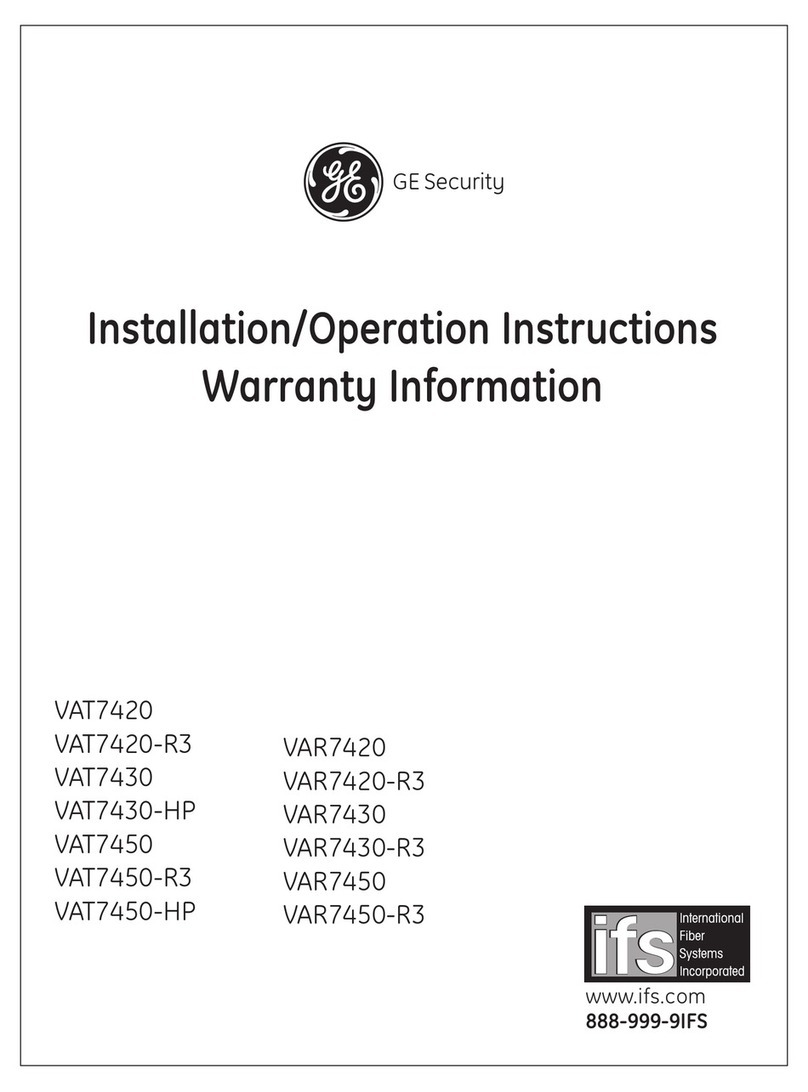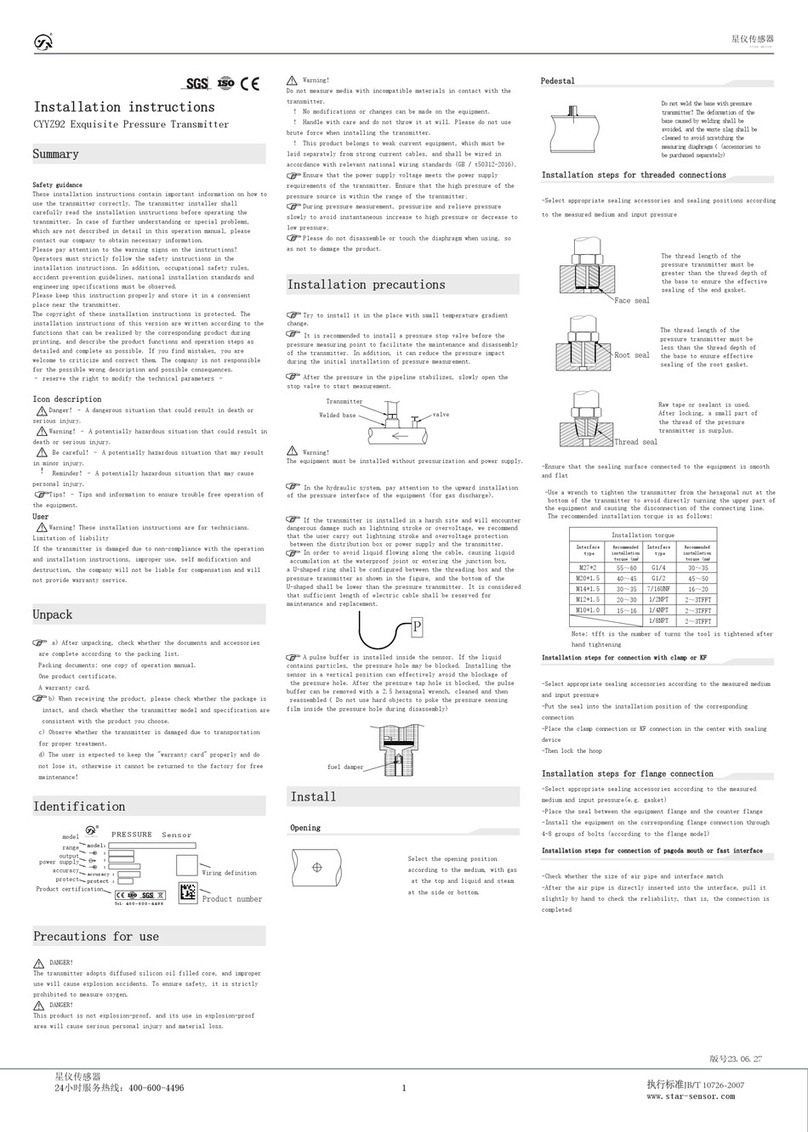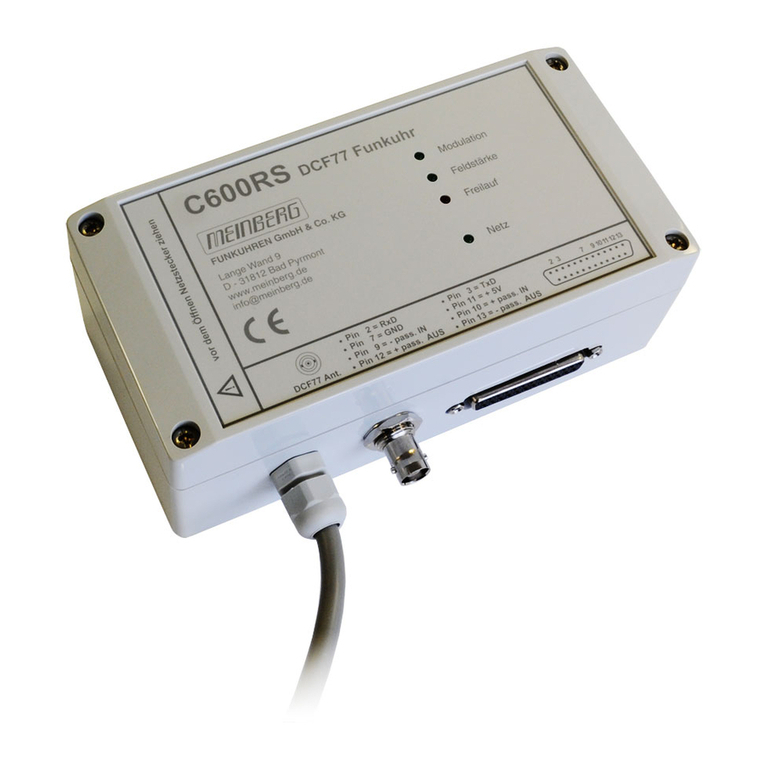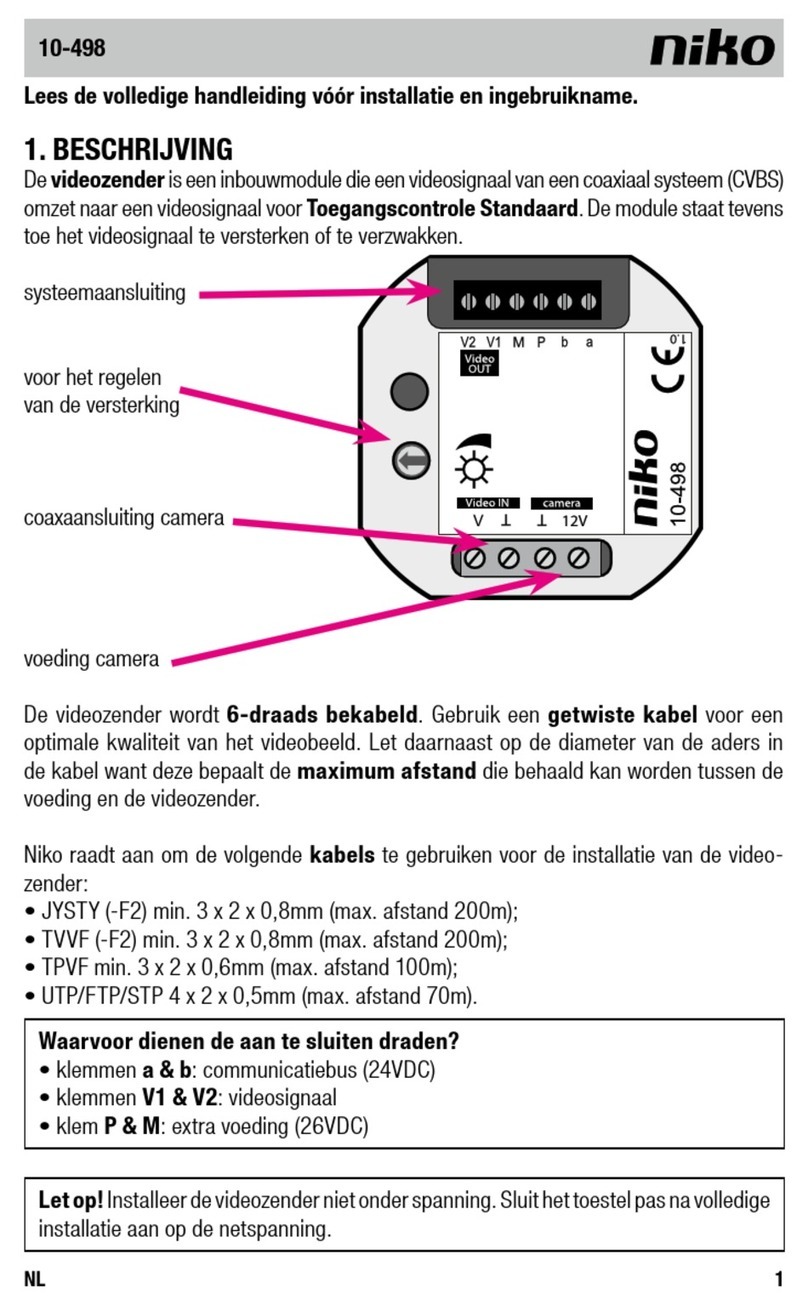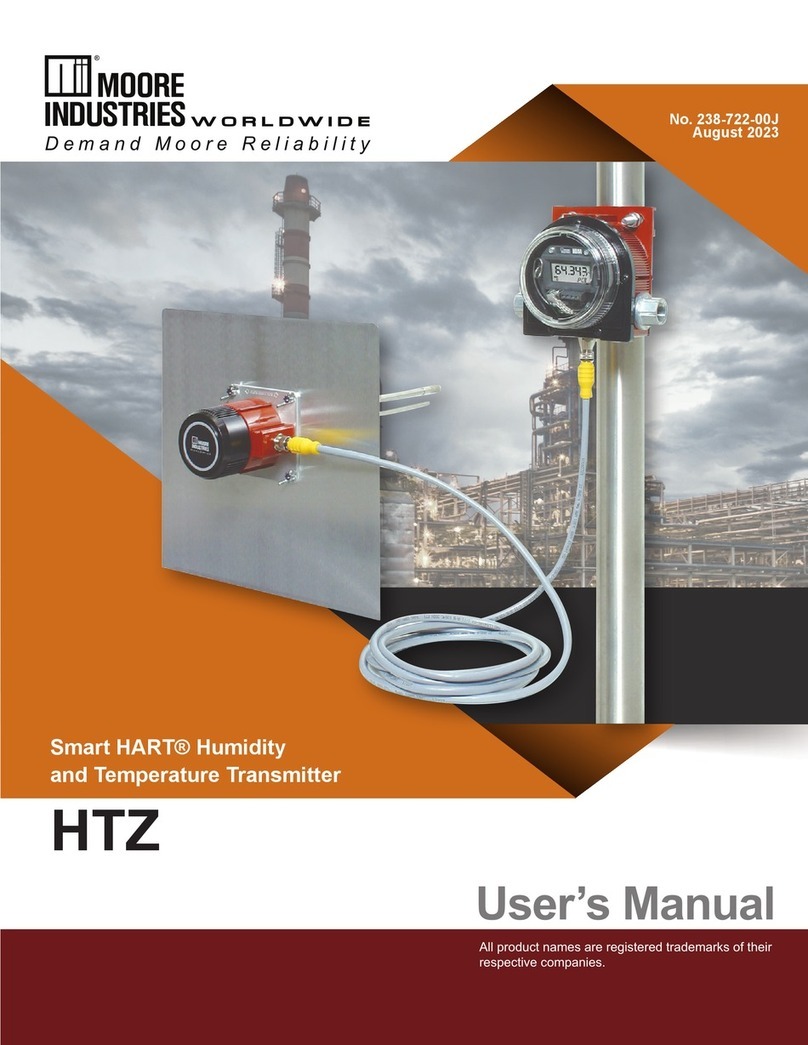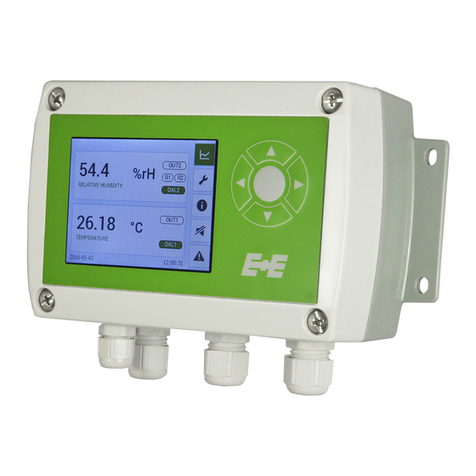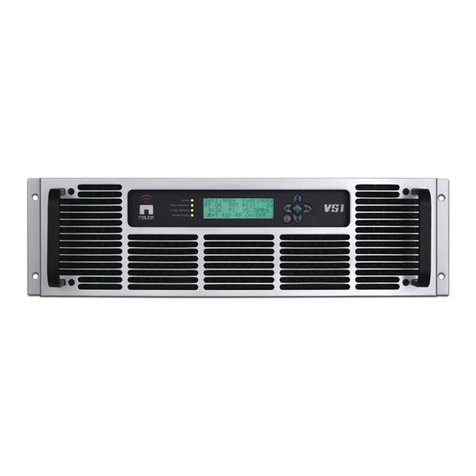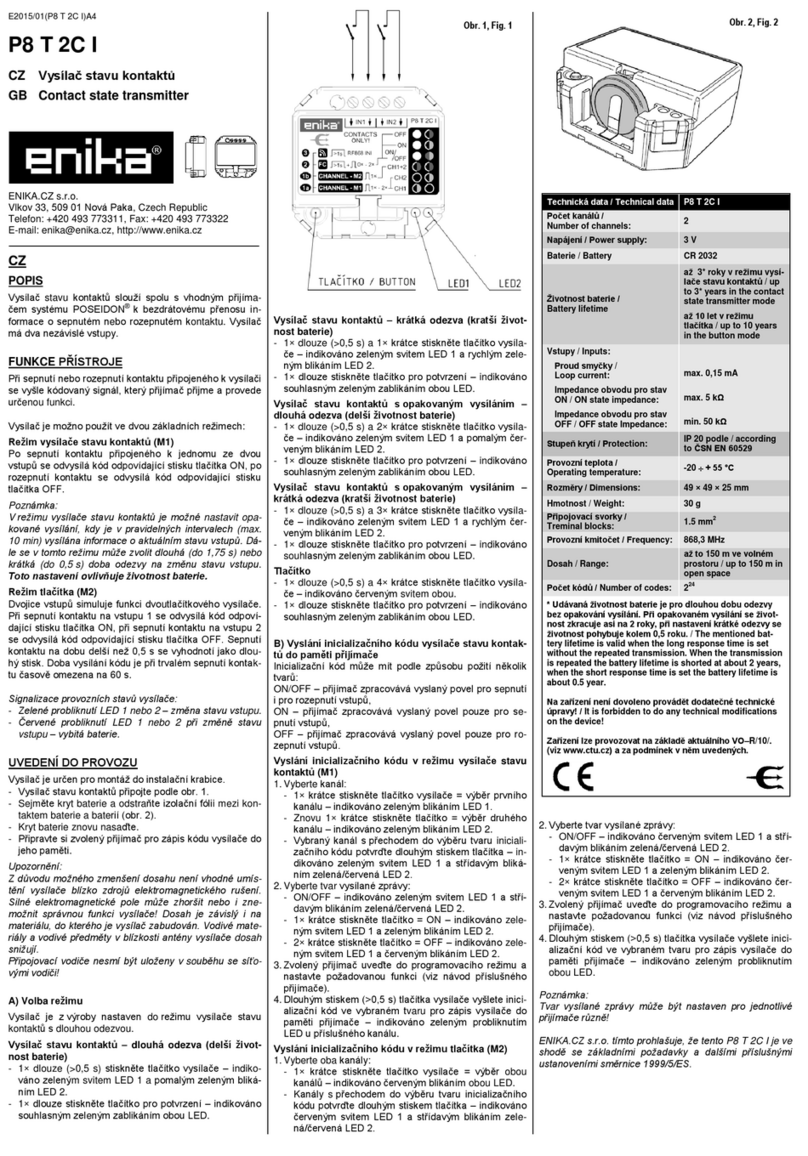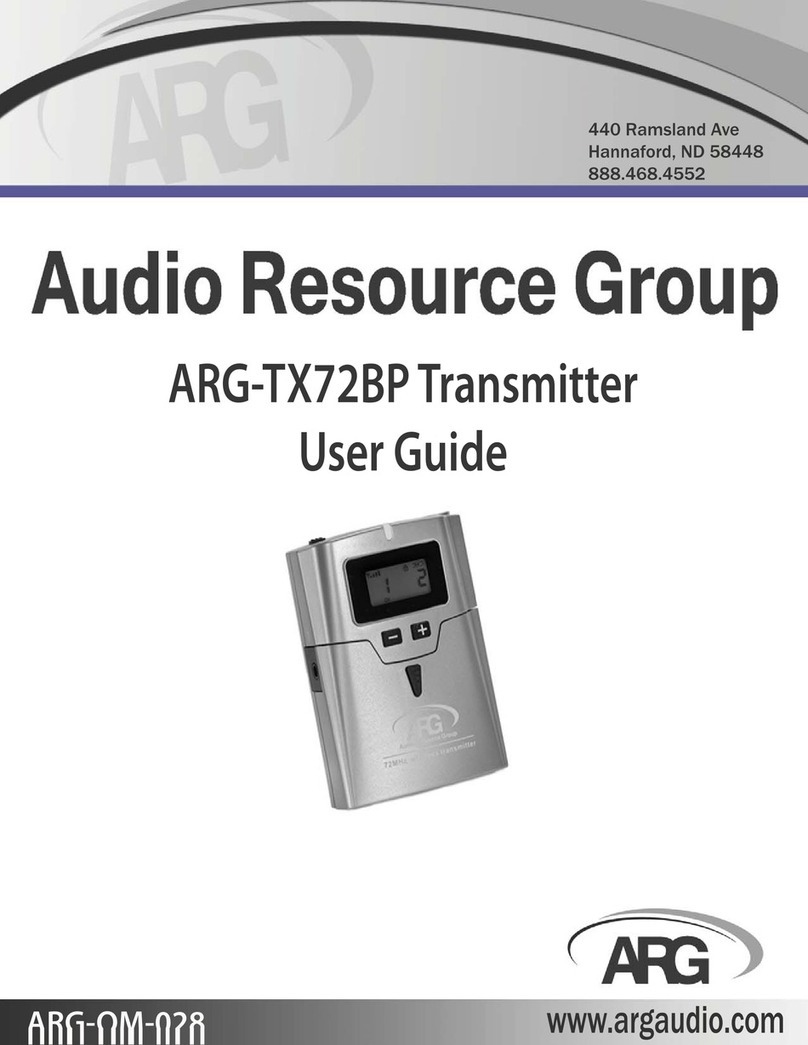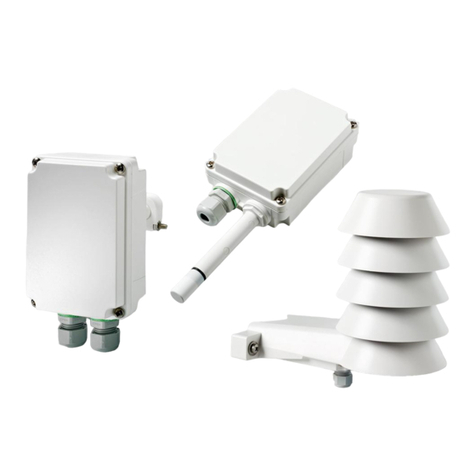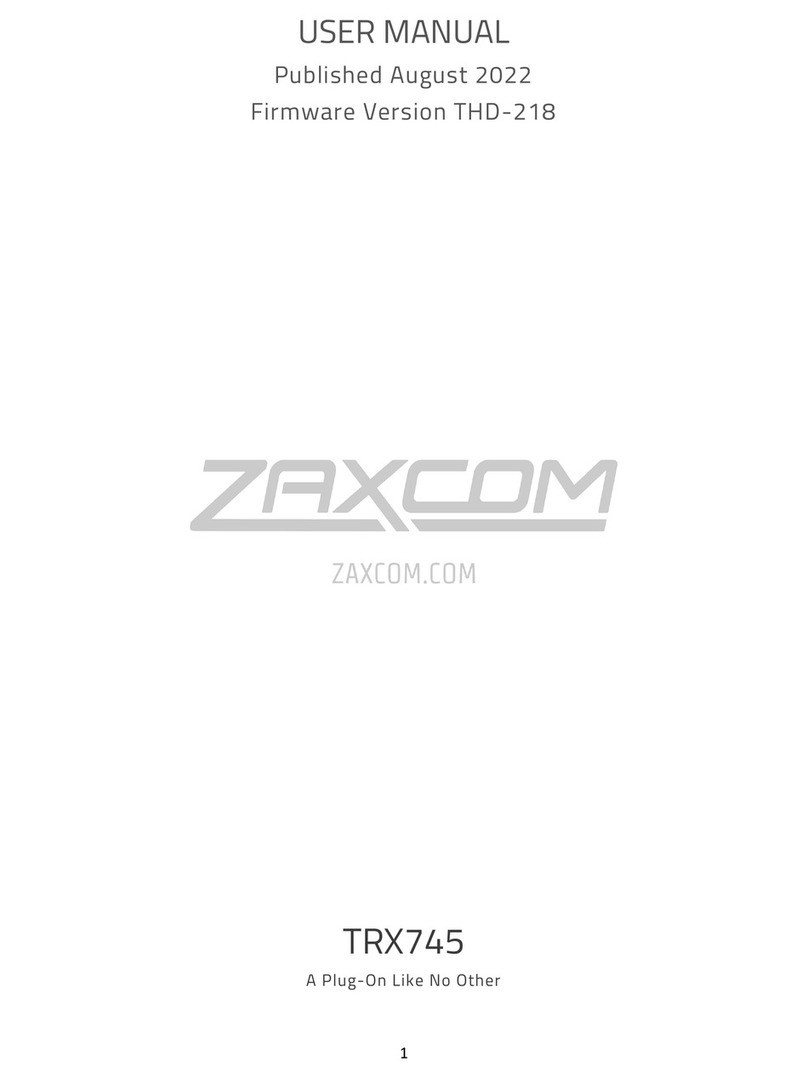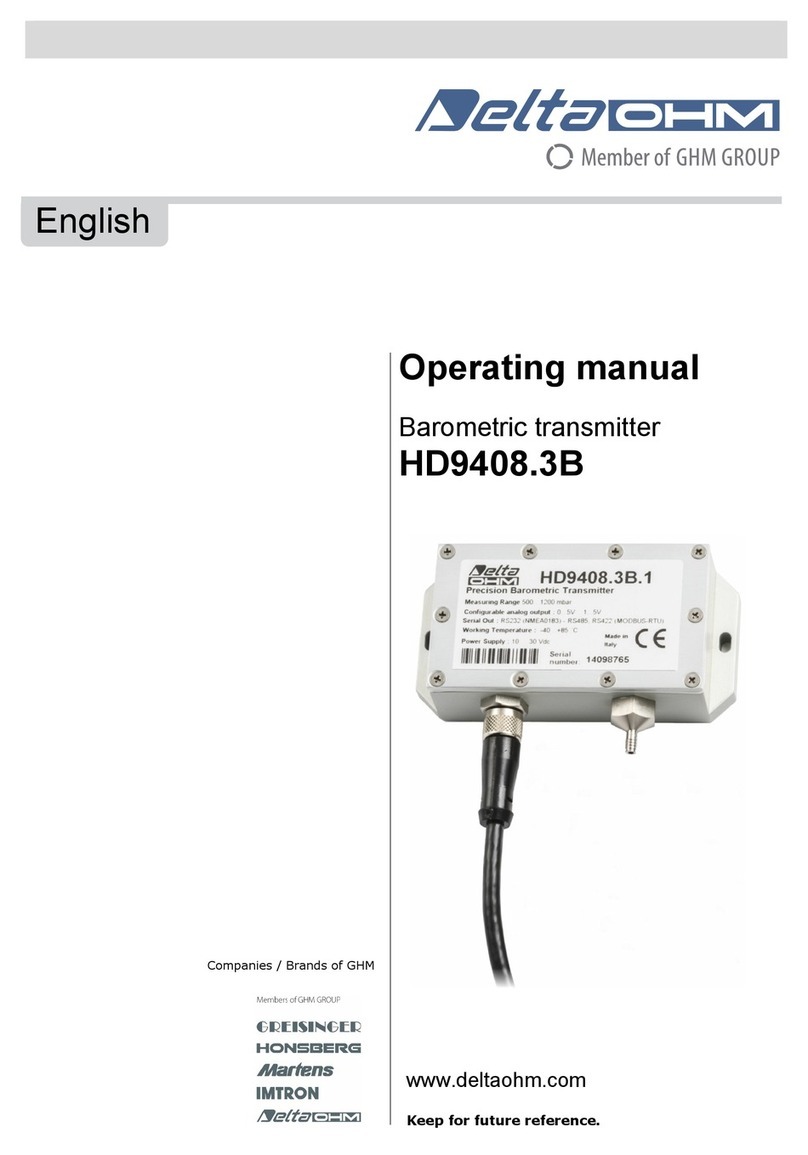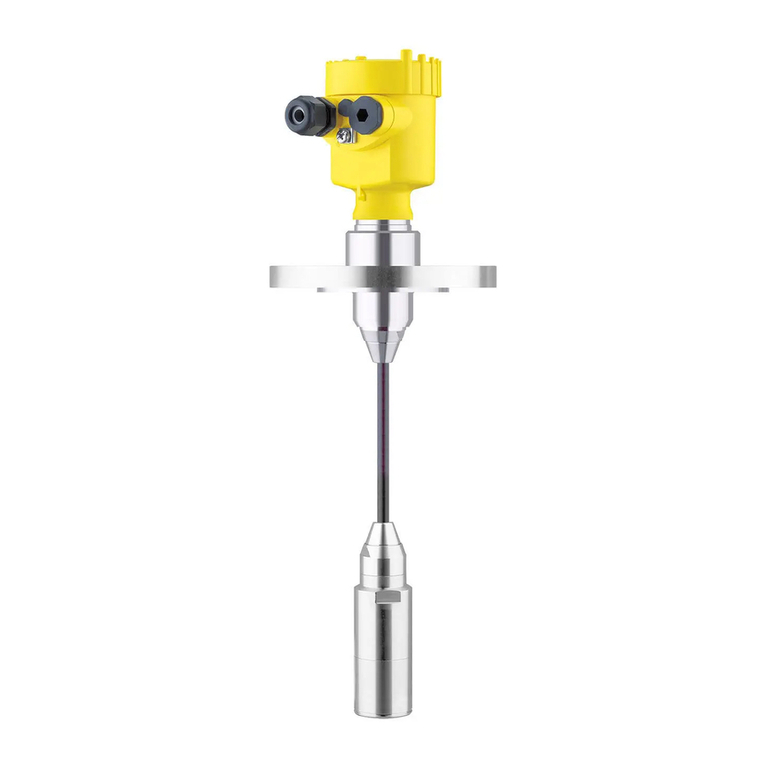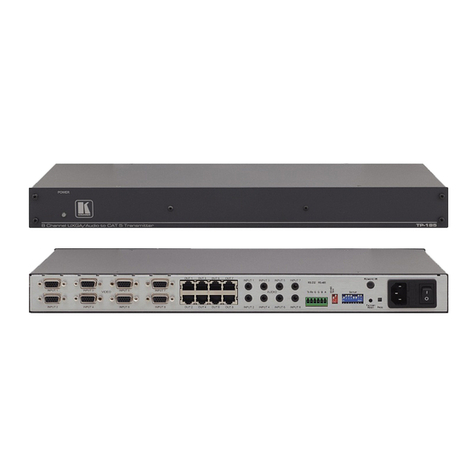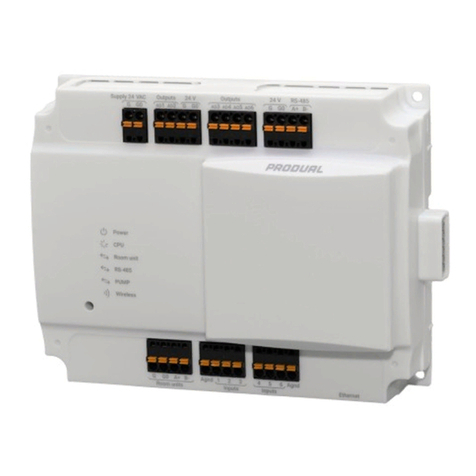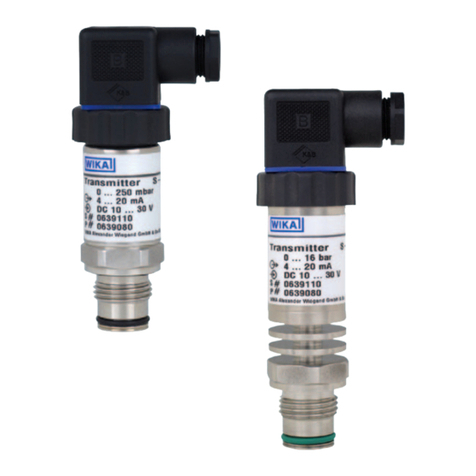GE Security RF300NW8 User manual

GE
Securit
y
Wireless 868 MHz Universal
Transmitter
Installation Instructions
EN IT
1 2
A
B
3
10 mm
0.4 in
+
C
J
J2 J3
HI
D
FG
E
K
© 2008 GE Security, Inc.
1 of 8
P/N KEM-PK27107D • REV 00.02 • ISS 24NOV08

EN: Installation instructions
Information
This is the GE Door-Window Sensor 868 Mhz Installation
Instructions for models RF300NW8, RF300NW8B, NX-850N-I and
NX-851N-I.
The Universal Transmitter is provided with a 3-volt DL 123A
Lithium Battery and an external magnet. It contains an internal
reed switch, connections for an external open or closed contact
loop and a cover and pry off tamper switch. Two jumpers allow
you to select internal or external reed, and normally open or
closed external loop.
This Universal Transmitter is a single address device and will
transmit Alarm, Tamper, Restore, and Low Battery codes. It also
transmits a "supervisory" signal every 15 minutes to the receiver
indicating its status and presence.
Explanation of figures
1 Opening the transmitter housing
A Cover
B Slot
2 Securing the transmitter housing
3 Universal transmitter layout
C Mounting hole
D Magnet
E Aligning mark
F Battery holder
G Reed contact
H External contact input
I J2, external contact
J J3, reed contact
K Mounting hole
Jumpers
J2 - External contact (fig. 3, I) J3 - Reed contact (fig. 3, J)
Normally open (default)
Reed enabled (default)
Normally closed Reed disabled
Note: You should only use the internal reed OR the external
contact.
Installation
Recommended mounting surfaces include plastic, wooden and
aluminium door/window frames. Mounting on steel surfaces must
be avoided.
The maximum gap between the case of the transmitter and the
external magnet cannot be greater than 10 mm. For applications
requiring a gap of 10 mm or greater, use an external contact
switch connected to the external loop circuit and disable the
internal reed switch.
The Universal Transmitter should be tested at the intended
location before permanently mounting to make sure that proper
signal transmissions can be made. Consult the appropriate Control
Panel Instructions for programming and test details.
Opening, closing and mounting
To remove the sensor cover (fig. 1, A), press a small screwdriver
into the slot (fig. 1, B) at the end of the sensor while lifting the
cover. Make sure the unit and magnet can be aligned properly in
the intended mounting position and the cover can be
opened/closed after mounting. Mount the unit with the two flat
head screws (included) using the slotted mounting hole in the base
(fig. 3, K) and the mounting hole next to the tamper switch
(fig. 3, C).
Replace the cover by hooking in the "lower end" first and then
snapping the opposite cover end into place. Secure it (fig. 2) with a
self-taping screw (included).
EN-compliant installation
In order to install your wireless product according to EN50131-1,
please screw the transmitter housing according to fig. 2.
Use of the internal reed (supplied)
It is important that the magnet (fig. 3, D) is installed in such a way
that it is aligned with the mark (fig. 3, E) on the detector. Verify that
the reed switch (fig. 3, G) is enabled, and jumpers J2 (fig. 3, I) and
J3 (fig. 3, J) are in the standard position.
Use of an external contact loop
The transmitter can monitor "open circuit" or "closed circuit"
contacts but not both at the same time. Select and set Jumper
J2 (fig. 3, I) for "Normally Open" or "Normally Closed" loop. An
alarm will be transmitted when the contact opens (J2 in "Normally
Closed" position) or when the contact is closed (J2 in "Normally
Open" position). When the loop contact restores, a restore event
will be transmitted. Connect the external loop contact to the two
way screw terminal block (fig. 3, H). Jumper J2 should be set to the
"Normally Open" position (default position) if the external loop is
not used. Jumper J3 should be set to "reed disabled".
Note: In EN/INCERT approved intrusion security applications the
usage of the external input is prohibited.
Use of pry-off tamper
To allow the functioning of the pry-off tamper, you need to fit a
screw in the mounting hole (fig. 3, C). If the sensor is removed from
the wall the plastic part at the back of the base and a part of the
PCB breaks out.
Battery installation and removal
Insert the battery into the battery holder (fig. 3, F), observing
correct polarity.
Caution: Batteries can explode or cause burns if disassembled,
recharged or exposed to fire or high temperature. Please dispose
of old batteries properly.
Upon indication of low battery, please remove the battery from its
holder. Dispose the used battery according to the enclosed
WEEE instructions and/or local government authorities.
2 of 8 P/N KEM-PK27107D • REV 00.02 • ISS 24NOV08

System programming
There is no address setting at the transmitter.
Consult the appropriate Control Panel Programming Instructions.
Specifications
Transmitter frequency: 868 MHz
Free space range (Line of sight): 400 m
Indoors range: up to 20 m
Supervision time < 20 min
Magnet make distance < 10 mm
Magnet break distance > 30 mm
External contact resistance: 100 ohms max
Current consumption: 10 µA typ., < 30 mA during transmit
Battery type use only: Duracell DL123A, Panasonic
CR123A,
Sanyo CR123A, Varta CR123A,
Energizer CR123A
Battery life: 3 years typical
Colour: White or Brown
Case dimensions: 31x 31 x 100 mm
Weight: 100 g
Operating temperature: -10 to +50°C
Declaration of Conformity
The RF300NW8/RF300NW8B/NX-850N/NX-851-N, Universal Transm.
868MHz, are suitable for use in alarm systems designed to comply with
PD6662 at security grade 2 and environmental class II. They conform to
the relevant parts of the following standards:
EN50131-1:2006 Alarm systems-Intrusion systems Part 1: System
requirements
TS50131-2-6:2004 Alarm systems. Intrusion systems. Requirements
for opening contacts (magnetic)
TS50131-5-3:2005 Alarm systems. Intrusion systems. Requirements
for interconnections equipment using radio-
frequency techniques
BSIA Form 171,
Issue 2 May 2007
Guideline for the use of the PD6662:2004 scheme
for the implementation of prEN50131:2004
BSIA Form No 185,
May 2005
RECOMMENDATIONS TO MANUFACTURERS for the
interpretation of detector standards:
DD TS 50131-2-2:2004 Requirements for passive
infrared detectors
DD TS 50131-2-3:2004 Requirements for
microwave detectors
DD TS 50131-2-4:2004 Requirements for combined
passive infrared and microwave detectors
DD TS 50131-2-5:2004 Requirements for combined
passive infrared and ultrasonic detectors
The RF300NW8/RF300NW8B/NX-850N/NX-851-N, Universal Transm.
868MHz, has been tested and certified to TS50131-2-6, EN50131-1 and
EN50131-5-3 for security grade 2, environmental class 2, by the Dutch
testing and certification body Telefication B.V.
IT: Istruzioni di Installazione
Informazioni
Queste Istruzioni di Installazione si riferiscono ai trasmettitori
universali GE modello RF300NW8 e RF300NW8B.
Il trasmettitore universale è fornito con una batteria al litio da 3-
volt DL 123A e con un magnete esterno. Contiene un reed al suo
interno, una connessione per un contatto esterno normalmente
aperto o chiuso e la protezione contro l’apertura e la rimozione.
Due jumpers permettono di selezionare se utilizzare il reed interno
o il contatto esterno, e se il contatto esterno deve essere
normalmente aperto o normalmente chiuso.
Questo trasmettitore universale è un dispositivo con un singolo
indirizzo e può trasmettere le condizioni di Allarme, Manomissione,
Ripristino e Batteria Scarica. Inoltre trasmette un segnale di
supervisione ogni 15 minuti verso il ricevitore indicando il suo
stato e la sua presenza.
Spiegazione delle immagini
1 Apertura del contenitore
A Coperchio
B Fessura
2 Fissare il coperchio del trasmettitore
3 Componenti del Trasmettitore Universale
C Foro di fissaggio
D Magnete
E Segno per l’allineamento
F Alloggiamento batteria
G Contatto Reed
P/N KEM-PK27107D • REV 00.02 • ISS 24NOV08 3 of 8

H Ingresso per contatto Esterno
I J2, contatto esterno
J J3, contatto reed
K Foro di fissaggio
Jumpers
J2 – Contatto Esterno (fig. 3, I) J3 – Contatto Reed (fig. 3, J)
Normalmente aperto (default)
Reed abilitato (default)
Normalmente chiuso
Reed disabilitato
Nota: E’ possibile utilizzare solament il reed interno o il contatto
Installazione
e il trasmettitore su finestre o porte in plastica,
za massima tra il trasmettitore ed il magnete non può
re Universale dovrebbe essere provato nella
Apertura, chiusura e installazione
inserire un piccolo
are il coperchio inserendolo prima dalla parte opposta
Installazione conforme alle EN
iversale in conformità
Utilizzo del reed interno (fornito)
nstallato in maniera
Utilizzo del contatto esterno
on contatti “normalmente
Utilizzo del contatto antirimozione
antirimozione, è
Installazione e rimozione della batteria
ervando la
Attenzione: La Batteria può esplodere o causare incendi se viene
e o
esterno.
E’ possible installar
legno e alluminio. L’installazione su superfici in acciaio deve essere
evitata.
La distan
superare i 10 mm. Per applicazioni che richiedano un gap di 10
mm o superiore utilizzare un contatto esterno collegato
all’ingresso del trasmettitore per i contatti esterni e disabilitare il
reed interno.
Il Trasmettito
posizione in cui deve essere installato prima di fissarlo
permanentemente in modo da assicurarsi che le appropriate
trasmissioni possano essere effettuate. Consultare il manuale
della centrale per i dettagli sulla programmazione e la verifica del
funzionamento del trasmettitore.
Per rimuovere il coperchio del sensore (fig. 1, A),
cacciavite nella fessura (fig. 1, B) mentre si solleva il coperchio.
Assicurarsi che il trasmettitore ed il magnete possano essere
correttamente allineati nella posizione in cui si intende montare il
sensore e che il coperchio possa essere aperto/chiuso dopo
l’installazione. Fissare il trasmettitore con le due viti a testa piatta
(incluse) utilizzando il foro di fissaggio ad asola nella base (fig. 3, K)
ed il foro di fissaggio vicino al contatto antimanomissione
(fig. 3, C).
Riposizion
alla fessura e poi chiudendolo a compasso fino allo scatto. Fissare
il coperchio (fig. 2) con la vitina autofilettante (inclusa).
Allo scopo di installare il trasmettitore un
con la EN50131-1, fissare il coperchio dello stesso come illustrato
in figura 2.
E’ importante che il magnete (fig. 3, D) venga i
tale da essere allineato con il segno (fig. 3, E) riportato sul
trasmettitore. Verificare che il contatto reed (fig. 3, G) sia abilitato,
e che il jumper J2 (fig. 3, I) e J3 (fig. 3, J) siano nella posizione
standard.
Il trasmettitore può controllare circuiti c
aperti” o “normalmente chiusi” ma non entrambi nello stesso
momento. Impostare il Jumper J2 (fig. 3, I) su "Normalmente
Aperto" o "Normalmente Chiuso". Verrà trasmesso un allarme
quando il contatto si aprirà (J2 in posizione "Normalmente Chiuso")
o quando il contatto si chiuderà (J2 in posizione "Normalmente
Aperto"). Quando il contatto si ripristina verrà trasmesso l’evento
di ripristino. Collegare il circuito del contatto esterno ai due
morsetti (fig. 3, H). Il jumper J2 dovrebbe essere impostato nella
posizione "Normalmente Aperto" (posizione di default) se il
contatto esterno non viene utilizzato. Quando viene utilizzato il
contatto esterno il jumper J3 deve essere impostato nella
posizione “reed disabilitato".
Per permettere il funzionamento del contatto
necessario inserire una vite nel foro di fissaggio (fig. 3, C). Se il
trasmettitore viene rimosso dalla sua posizione una parte della
base ed una parte del PCB vengono rotte attivando la
segnalazione di manomissione.
Inserire la batteria nel suo alloggiamento (fig. 3, F), oss
corretta polarità.
disassemblata, ricaricata o esposta al fuoco o ad alte
temperature. Si prega di smaltire opportunamente le b
usate.
atterie
A seguito di una indicazione di bassa batteria rimuovere la
Programmazione del sistema
sul trasmettitore.
Specifiche
requenza di Transmissione: 868 MHz
batteria dal suo alloggiamento. Smaltire la batteria usata in
conformità con istruzioni WEEE fornite con il trasmettitore e/o le
istruzioni fornite dagli enti governativi locali.
Non vi è nessuna impostazione di indirizzo
Consultare le Istruzioni di Programmazione della centrale.
F
Portata in campo libero: 400 m
Portata in Interno: fino a 20 m
Tempo di Supervisione < 20 min
Distanza funzionamento Magnete < 10 mm
Distanza apertura Magnete > 30 mm
Resistenza contatto Esterno: 100 ohms max
Assorbimento di Corrente: 10 µA nom., < 30 mA in trasmissione
Tipo batteria: Duracell DL123A, Panasonic
CR123A,
Sanyo CR123A, Varta CR123A,
Energizer CR123A
Durata batteria: 3 anni nominale
Colore: Bianco o Marrone
Dimensioni : 31x 31 x 100 mm
Peso: 100 g
Temperatura di funzionamento: 0°C-10 to +5
4 of 8 P/N KEM-PK27107D • REV 00.02 • ISS 24NOV08

Dichiarazione di Conformità
I Trasmettitori Universali a 868MHz RF300NW8/RF300NW8B sono adatti
per l’utilizzo in sistemi di allarme progettati in conformità con la PD6662 al
grado di sicurezza 2 e classe ambientale II. Sono conformi alle sezioni
attinenti dei seguenti standard:
EN50131-1:2006 Sistemi di Allarme-Sistemi AntiIntrusione Parte 1:
Requisiti Sistema
TS50131-2-6:2004 Sistemi di Allarme-Sistemi AntiIntrusione. Requisiti
per i contatti magnetici
TS50131-5-3:2005 Sistemi di Allarme-Sistemi AntiIntrusione. Requisiti
per gli apparecchi di interconnessione che utilizzano
tecniche di radio-frequenza
BSIA Form 171,
Issue 2 Maggio
2007
Direttiva per l’utilizzo della PD6662:2004 schema per
l’implementazione del prEN50131:2004
BSIA Form No 185,
Maggio 2005
CONSIGLI AI COSTRUTTORI per l’interpretazione degli
standard sui rivelatori:
DD TS 50131-2-2:2004 Requisiti per i rivelatori ad
infrarossi passivi
DD TS 50131-2-3:2004 Requisiti per i rivelatori a
microonde
DD TS 50131-2-4:2004 Requisiti per i rivelatori
combinati ad infrarossi passive e microonde
DD TS 50131-2-5:2004 Requisiti per i rivelatori
combinati ad infrarossi passive ed ultrasuoni
I Trasmettitori Universali RF300NW8/RF300NW8B, sono stati testati e
certificati in base alle TS50131-2-6, EN50131-1 e EN50131-5-3 per il
grado di sicurezza 2, classe ambientale 2, dall’istituto di prove e
certificazioni olandese Telefication B.V.
P/N KEM-PK27107D • REV 00.02 • ISS 24NOV08 5 of 8

6 of 8 P/N KEM-PK27107D • REV 00.02 • ISS 24NOV08

Disposal of Electrical Equipment
European Directive 2002/96/EC (WEEE)
The European directive “Waste Electrical and Electronic
Equipment” (WEEE) aims to minimise the impact of
electrical and electronic equipment waste on the
environment and human health. To conform with this
directive, electrical equipment marked with this symbol
must not be disposed of in European public disposal
systems. European users of electrical equipment must
now return end-of-life equipment for disposal. Further
information can be found on the following website:
www.recyclethis.info.
Cílem Evropské směrnice o odpadech z elektrických a
elektronických zařízení (WEEE) je minimalizovat vliv
odpadu z elektrických a elektronických zařízení na životní
prostředí a lidské zdraví. Podle této směrnicie, se
elektrická zařízení označená tímto symbolem nesmí
likvidovat v zařízeních na likvidaci komunálního odpadu.
Uživatelé elektrických zařízení v Evropěmusí nyní tato
zařízení po skončení životnosti odevzdat k likvidaci. alší
informace naleznete na následující internetové adrese:
www.recyclethis.info.
Det europæiske WEEE direktiv, om bortskaffelse af
elektrisk og elektronisk udstyr har til formål at minimere
den indvirkning, som affald af elektrisk og elektronisk
udstyr har på miljøet og mennesker. I henhold til
direktivet må elektrisk udstyr, der er mærket med dette
symbol, ikke bortskaffes sammen med almindeligt
husholdningsaffald i Europa. Europæiske brugere af
elektrisk udstyr skal aflevere kasserede produkter til
genbrug. Yderligere oplysninger findes på webstedet
www.recyclethis.info.
Das Ziel der EG-Richtlinie über Elektro- und Elektronik-
Altgeräte ist, Umwelt- und Gesundheitsschäden durch
Elektro- und Elektronik-Altgeräte so gering wie möglich zu
halten. Um diese Richtlinie einzuhalten, dürfen Elektrogeräte,
die mit diesem Symbol gekennzeichnet sind, nicht in den
öffentlichen europäischen Entsorgungssystemen entsorgt
werden. Europäische Benutzer von Elektrogeräten müssen
ab sofort Altgeräte zur Entsorgung zurückgeben.Nähere
Informationen hierzu finden Sie auf der folgenden Website:
www.recyclethis.info.
ΗΕυρωπαϊκή οδηγία "Απόβλητα Ειδών Ηλεκτρικού και
Ηλεκτρονικού Εξοπλισµού" (ΑΗΗΕ) έχει στόχο την
ελαχιστοποίηση της επίδρασης των αποβλήτων ηλεκτρικού και
ηλεκτρονικού εξοπλισµού στο περιβάλλον και την υγεία των
ανθρώπων. Προς συµµόρφωση µεαυτή την οδηγία, ο
ηλεκτρικός εξοπλισµός που φέρει αυτή την ένδειξη δεν πρέπει
να απορρίπτεται σε Ευρωπαϊκά δηµόσια συστήµατα
απόρριψης. Οι Ευρωπαίοι χρήστες ηλεκτρικού εξοπλισµού
πρέπει πλέον να αποθέτουν τον εξοπλισµόόταν λήξει η
διάρκεια ζωής του. Μπορείτε να βρείτε περισσότερες
πληροφορίες στην ακόλουθη τοποθεσία στο web:
www.recyclethis.info.
El objetivo de la directiva europea de Eliminación de equipos
eléctricos y electrónicos (WEEE) es minimizar el impacto de
la eliminación de equipos eléctricos y electrónicos sobre el
medioambiente y la salud de las personas. Para cumplir con
esta directiva, el equipamiento eléctrico marcado con este
símbolo no deberá desecharse en ningún sistema de
eliminación europeo público. Los usuarios europeos de
equipamiento eléctrico deberán retornar los equipos
eléctricos y electrónicos al final de su vida útil para su
eliminación. Para más información visite el siguiente sitio
Web: www.recyclethis.info.
Euroopa direktiivi elektri- ja elektroonikaseadmete
jäätmete kohta eesmärk on minimeerida elektri- ja
elektroonikaseadmete jäätmete mõju keskkonnale ja
inimeste tervisele. Nimetatud direktiivi alusel ei tohi
käesoleva sümboliga märgitud elektriseadmeid
kõrvaldada Euroopa avalikes kõrvaldamissüsteemides.
Euroopa elektriseadmete kasutajad peavad nüüdsest
vanad seadmed kõrvaldamiseks tagastama.
Lisainformatsiooni saab Internetist aadressil:
www.recyclethis.info.
Euroopan parlamentin ja neuvoston direktiivi sähkö- ja
elektroniikkalaiteromusta (WEEE), jonka tarkoitus on
minimoida sähkö- ja elektroniikkalaiteromun
ympäristöllisiä ja terveydellisiä haittoja. Tällä symbolilla
merkittyjä elektroniikkalaitteita ei kyseisen direktiivin
noudattamiseksi saa toimittaa eurooppalaisiin julkisiin
jätehuoltojärjestelmiin. Elektroniikkalaitteiden
eurooppalaisten käyttäjien täytyy palauttaa käytöstä
poistetut laitteet jätteenkäsittelyä varten. Lisätietoja on
sivustolla www.recyclethis.info.
La directive européenne " Déchets d'Equipements
Electriques et Electroniques " (DEEE) a pour but de
minimiser l'impact des déchets électriques et
électroniques sur l'environnement et la santé humaine.
Conformément à cette directive, tout équipement
électrique disposant de ce symbole ne doit pas être jeté
dans les systèmes d'évacuation des déchets publics
européens. Les utilisateurs européens d'équipement
électrique doivent désormais renvoyer tout équipement
électrique en fin de vie pour traitement. Vous trouverez
de plus amples informations sur le site Web suivant :
www.recyclethis.info.
Az elektromos és elektronikus berendezések
hulladékairól” (WEEE) szóló európai irányelv célja, hogy
minimálisra csökkentse az elektromos és elektronikus
berendezésekből származó hulladék környezeti is
emberi egészségre gyakorolt hatását. Ezen irányelvek
alapján az ilyen emblémával ellátott elektronikus
berendezés Európában nem kerülhet nyilvános
hulladékgyűjtőrendszerbe. Az európai felhasználó
köteles az elektromos berendezést használatának
megszűnte után visszaküldeni, a hulladék megfelelő
kezelésére. További információ a következőweboldalon
található: www.recyclethis.info.
European representative for manufacture (EMC):
GE Security B.V., Kelvinstraat 7, 6003 DH Weert, The Netherlands.
http://www.gesecurity.eu
Revision 1.2 (May 2007)
Copyright © 2008 GE Security B.V. All rights reserved

La Direttiva europea nota come "Waste Electrical and
Electronic Equipment" (WEEE), è volta a ridurre al minimo
l'impatto sull'ambiente e sulla salute umana provocato dallo
smaltimento di apparecchiature elettriche ed elettroniche. Al
fine di garantire conformità a tale direttiva, è vietato smaltire
le apparecchiature elettriche contrassegnate da questo
simbolo nei comuni cassonetti per lo smaltimento dei rifiuti
siti in territorio europeo. Gli utilizzatori europei sono tenuti a
restituire le apparecchiature elettriche ed elettroniche al
termine del loro ciclo di vita per consentirne il corretto
smaltimento.Per ulteriori informazioni, visitare il seguente
indirizzo: www.recyclethis.info.
Europos Direktyva "Dėl elektros ir elektroninės įrangos
atliekų" siekiama sumažinti elektros ir elektroninės
įrangos atliekųpoveikįaplinkai ir žmoniųsveikatai.
Laikantis šios direktyvos reikalavimų, elektros įrangą,
pažymėtąšiuo simboliu, draudžiama šalinti Europos
viešose atliekųšalinimo sistemose. Dabar Europos
vartotojai privalo grąžinti eksploatuoti nebetinkamą
įrangą, kad ji būtųtinkamai utilizuota. Daugiau
informacijos rasite šioje interneto svetainėje:
www.recyclethis.info.
Eiropas Parlamenta un Padomes direktīvas par elektrisko
un elektronisko iekārtu atkritumiem (EEIA) mērķis ir
mazināt elektrisko un elektronisko iekārtu atkritumu
ietekmi uz vidi un cilvēku veselību. Saskaņā ar šīs
direktīvas noteikumiem elektriskās iekārtas, kuru
marķējumāir zemāk norādītais simbols, nedrīkst izmest
Eiropāesošajās sadzīves atkritumu sistēmās. Pēc
ekspluatācijas laika beigām elektrisko iekārtu lietotājiem
iekārtas jānodod otrreizējai pārstrādei. Sīkāku
informāciju var iegūt vietnēwww.recyclethis.info.
De Europese richtlijn "Afgedankte elektrische en
elektronische apparatuur" (AEEA) is er op gericht om de
impact van het afval van elektrische en elektronische
apparatuur op het milieu en de gezondheid van de mens te
minimaliseren. Om aan deze richtlijn te voldoen, moet
elektrische apparatuur die met dit symbool gemarkeerd is,
niet worden verwerkt in Europese openbare afvalsystemen.
Europese gebruikers van elektrische apparatuur dienen nu
apparatuur aan het einde van de levensduur aan te bieden
voor verwerking.Meer informatie vindt u op de volgende
website: www.recyclethis.info.
EU-direktiv om elektrisk og elektronisk avfall (WEEE /
Waste Electrical and Electronic Equipment) tar sikte på å
redusere belastningen av elektrisk og elektronisk avfall
på miljø og helse til et minimum. Dette direktivet krever
at elektrisk utstyr som er merket med dette symbolet,
ikke må avhendes i europeiske offentlige
renovasjonssystemer. Europeiske brukere av elektrisk
utstyr må nå returnere brukt utstyr for avhending.
Ytterligere informasjon finnes på dette nettstedet:
www.recyclethis.info.
Europejska dyrektywa o odpadach pochodzących ze sprzętu
elektrycznego i elektronicznego (WEEE - ang. Waste Electrical
and Electronic Equipment) ma na celu zminimalizowanie wpływu
odpadów, pochodzących ze sprzętu elektrycznego i
elektronicznego na środowisko i zdrowie ludzi. Żeby zapewnić
zgodność z tądyrektywą, urządzenia elektryczne oznaczone tym
symbolem nie mogąbyćutylizowane w publicznych europejskich
systemach utylizacji. Europejscy użytkownicy urządzeń
elektrycznych musząteraz zwracaćurządzenia do utylizacji po
zakończeniu ich przydatności użytkowej. Dalsze informacje
znajdująsięna następującej witrynie internetowej:
www.recyclethis.info.
A Directiva Europeia "Resíduos de Equipamentos
Eléctricos e Electrónicos" (WEEE) tem por objectivo
minimizar o impacte dos resíduos de equipamentos
eléctricos e electrónicos no meio ambiente e na saúde
dos seres humanos. A fim de obedecer a esta directiva, o
equipamento eléctrico marcado com este símbolo não
deve ser eliminado em sistemas públicos europeus de
processamento de resíduos. Os utilizadores europeus de
equipamento eléctrico devem agora devolver o
equipamento que atinge o fim da sua vida útil para ser
eliminado.Poderá encontrar mais informações no
website: www.recyclethis.info.
Действие европейской директивы об отходах электрического
иэлектронного оборудования (WEEE) направлено на
минимизацию негативного воздействия отходов
электрического иэлектронного оборудования на
окружающую среду издоровье людей. Чтобы обеспечить
соответствие требованиям этой директивы, электрическое
оборудование, помеченное этим символом, нельзя
утилизировать посредством европейских коммунальных
систем утилизации отходов. Теперь по окончании срока
эксплуатации европейские пользователи электрического
оборудования должны возвращать данное оборудование для
его утилизации. Более подробную информацию можно найти
на следующем веб-сайте: www.recyclethis.info.
Európska smernica o odpadoch z elektrických a
elektronických zariadení (WEEE) má za cieľminimalizovať
dopad elektrických a elektronických zariadení na životné
prostredie a ľudské zdravie. Podľa tejto smernice sa
elektrické zariadenie označené týmto symbolom nesmie
likvidovaťv zariadeniach na likvidáciu komunálneho
odpadu. Európski používatelia elektrických zariadení
musia zariadenie po skončení životnosti odovzdaťna
likvidáciu. Ďalšie informácie nájdete na tejto webovej
stránke: www.recyclethis.info.
Evropska navodila "Elektro odpad in elektronska oprema"
minimizira vpliv elektro in elektronskega odpada na okolje in
človeško zdravje. Za upoštevanje in rezultate teh navodil,
moramo električne aparate in elektronsko opremo označene
s tem simbolom odlagati na samo za to predvideni deponij.
Evropski koristniki električnih aparatov in elektronske
opreme morajo aparate, katerim je istekel rok trajanja vrniti
zaradi odlaganja le-teh na zato predvideno mesto. Detaljne
informacije lahko vidite na Web straneh:
www.recyclethis.info.
Det europeiska direktivet "Kassering av elektrisk och
elektronisk utrustning" (WEEE) syftar till att minimera
effekten på miljön och människors hälsa vid kassering av
elektrisk och elektronisk utrustning. För att uppfylla detta
direktiv får elektrisk utrustning märkt med denna symbol
inte kastas i allmänna europeiska sophanteringssytem.
Europeiska användare av elektrisk utrustning måste nu
returnera uttjänt utrustning för deponi. Ytterligare
information finns på följande webbplats:
www.recyclethis.info.
Avrupa direktifi "Atık Elektrikli ve Elektronik Teçhizat"
(WEEE), elektrikli ve elektronik teçhizat atıklarının çevre ve
insan sağlığıüzerindeki etkisini en aza indirmeyi hedefler.
Bu direktife uyum sağlamak için aşağıdaki sembolle
işaretlenmişolan elektrikli teçhizat Avrupa genel atık
sistemlerine atılmamalıdır. Elektrikli teçhizatın Avrupalı
kullanıcılarıömrünü tamamlamışteçhizatların atılması
için bundan böyle geri göndermelidir. Daha fazla bilgi
yandaki web sitesinden edinilebilir: www.recyclethis.info.
This manual suits for next models
3
Table of contents
Other GE Security Transmitter manuals
